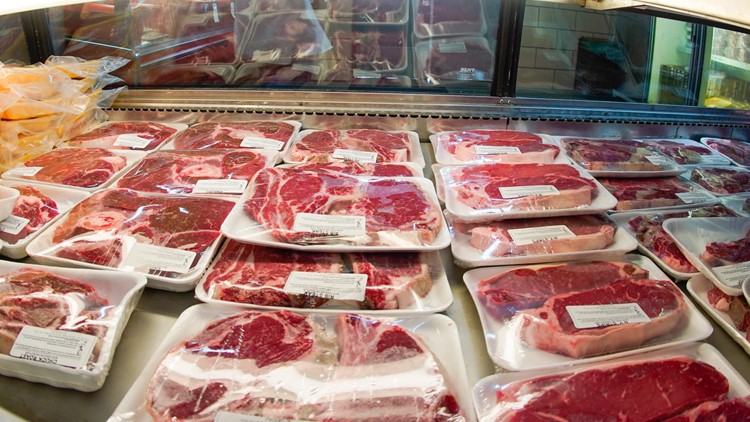OREGON, USA — An Oregon law took effect this week that is aimed at reducing the cost of beef by allowing the state to conduct United States Department of Agriculture (USDA) inspections.
The law was passed last year, but the state just started accepting applications for inspecting processing centers this week.
Since the start of the pandemic the cost of all sorts of goods have skyrocketed, spurred by what authorities said are supply chain issues. In Oregon, and with regards to beef specifically, these problems are caused in part by the small number of facilities that are licensed to slaughter cattle.
According to Oregon State University, there are only 13 federally approved slaughterhouses operating within the state right now that process cattle. All meat butchered in Oregon must be inspected before it can legally be sold in stores or served in restaurants, and wait times for inspection are long.
The bill that passed last year required the Oregon Department of Agriculture (ODA) to get certified by the USDA so that it can conduct its own livestock inspections. A previous state-run meat inspection program was sidelined in 1971 due to budget concerns.
With the increased inspection capacity, authorities believe that we could see the price of locally sourced beef decrease as more local producers have access to the market. This should, in turn, theoretically bring down the price of meat across the board in Oregon.
The state-run meat inspection program is estimated to cost taxpayers $800,000 to get off the ground, and operate for the first year. Costs including the hiring of staff, training said staff, and receiving federal certifications are covered up to 50% by the USDA.
Although the ODA is now licensed to conduct livestock inspections on processing centers, it does not yet have the authority to inspect large scale meat packing operations. These factories divide the meat for packaging and prepare it for nationwide distribution.
Although Oregon already has 13 processing centers for beef, there are no meat packers currently operating within the state, which would drive down prices further. Currently 27 other states have similar cooperative inspection programs in place.



